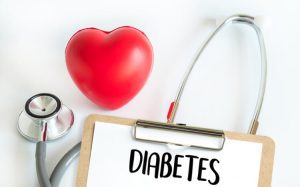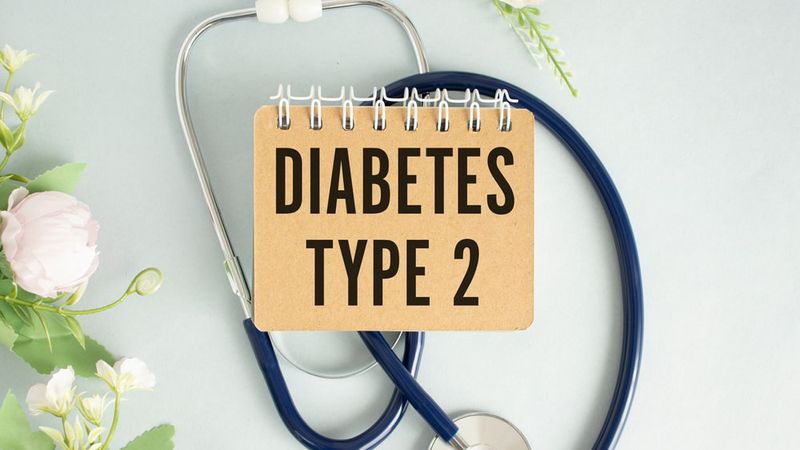Introduction
Embark on an insightful journey into the world of Type 2 Diabetes indicators with the guidance of Dr. Anne L. Peters. In this comprehensive guide, discover the often overlooked signals that may hint at the presence of Type 2 Diabetes. Dr. Peters sheds light on the importance of early recognition, emphasizing how understanding these silent signals can empower individuals to make proactive lifestyle changes for enhanced overall health.
Recognizing Silent Signals
Dr. Anne L. Peters introduces readers to the concept of silent signals that can indicate the presence of Type 2 Diabetes. Unlike overt symptoms, these subtle indicators may go unnoticed, making early recognition crucial for timely intervention. Dr. Peters underscores the significance of understanding these silent signals as a proactive measure for maintaining optimal health.
Recognizing silent signals becomes a key focus, as Dr. Peters provides insights into how these indicators manifest in everyday life. By unraveling the subtleties, individuals gain the knowledge needed to take charge of their health and make informed decisions for preventing and managing Type 2 Diabetes.

Common Silent Signals
- Unexplained Weight Loss: Sudden or unexplained weight loss can be a subtle indicator of underlying metabolic changes associated with Type 2 Diabetes.
- Increased Thirst and Urination: Excessive thirst and frequent urination may signal elevated blood sugar levels, prompting further investigation.
- Fatigue and Weakness: Persistent fatigue and weakness, often attributed to various factors, can be early indicators of metabolic imbalance.
- Blurry Vision: Changes in vision, particularly blurriness, may be linked to fluctuations in blood sugar levels.
- Slow-Healing Wounds: Impaired wound healing or frequent infections may indicate compromised immune function related to diabetes.
The Importance of Early Recognition
Dr. Anne L. Peters emphasizes the critical importance of early recognition in the context of Type 2 Diabetes. Early identification of silent signals allows for timely intervention, empowering individuals to make lifestyle changes that can prevent or manage the condition effectively.
Understanding the significance of early recognition becomes a proactive step toward improved health outcomes. Dr. Peters delves into the potential impact of lifestyle modifications, stressing that awareness of Type 2 Diabetes indicators is the first step toward a healthier and more informed life.
Preventive Lifestyle Changes
Dr. Peters provides practical insights into preventive lifestyle changes that individuals can adopt upon recognizing Type 2 Diabetes indicators. From dietary modifications and regular physical activity to stress management and regular health check-ups, these changes form a comprehensive approach to maintaining metabolic health.
By embracing preventive lifestyle changes, individuals can not only manage silent signals but also potentially reverse the course of prediabetes or early-stage Type 2 Diabetes. Dr. Peters empowers readers with actionable steps, fostering a sense of control over their health journey.
Navigating Dietary Modifications
Diet plays a pivotal role in managing and preventing Type 2 Diabetes. Dr. Peters advocates for a balanced and nutritious diet that focuses on controlling blood sugar levels. She discusses the importance of portion control, choosing complex carbohydrates over refined sugars, and incorporating a variety of nutrient-dense foods into daily meals.
By navigating dietary modifications, individuals can better regulate their metabolism and promote overall well-being. Dr. Peters provides practical tips for creating sustainable dietary habits that align with long-term health goals.
Physical Activity as a Key Player
Regular physical activity is a cornerstone in the prevention and management of Type 2 Diabetes. Dr. Peters delves into the benefits of exercise in regulating blood sugar levels, improving insulin sensitivity, and promoting cardiovascular health. She emphasizes the importance of finding enjoyable activities and incorporating them into daily routines.
With physical activity as a key player, individuals can enhance their metabolic health and reduce the risk of developing Type 2 Diabetes. Dr. Peters encourages readers to discover activities that suit their preferences, making exercise an integral part of a healthy lifestyle.
Stress Management and Mental Well-being
Stress can significantly impact blood sugar levels, making stress management crucial for individuals navigating Type 2 Diabetes indicators. Dr. Peters discusses mindfulness techniques, relaxation exercises, and other stress-reducing strategies that contribute to mental well-being.
Addressing the connection between stress and diabetes, Dr. Peters empowers readers to prioritize mental health. By incorporating stress management practices into daily life, individuals can create a supportive environment for overall well-being and effectively manage silent signals.
Common Silent Signals of Type 2 Diabetes:
| Signal | Description | Potential Implications |
|---|---|---|
| Unexplained Weight Loss | Sudden or unexplained weight loss that may indicate underlying metabolic changes. | Early stages of diabetes affecting metabolism. |
| Increased Thirst and Urination | Experiencing excessive thirst and frequent urination, suggesting elevated blood sugar levels. | Possible indication of glucose imbalance requiring investigation. |
| Fatigue and Weakness | Persistent fatigue and weakness, often attributed to various factors, could signal metabolic imbalance. | Early signs of disrupted energy utilization associated with diabetes. |
| Blurry Vision | Changes in vision, particularly blurriness, may be linked to fluctuations in blood sugar levels. | Potential impact of elevated glucose levels on eye health. |
| Slow-Healing Wounds | Impaired wound healing or frequent infections may indicate compromised immune function related to diabetes. | Diabetes affecting the body’s ability to heal and resist infections. |
Regular Health Check-ups and Monitoring
Regular health check-ups and monitoring are essential components of proactive diabetes management. Dr. Peters advocates for routine visits to healthcare professionals, including blood sugar monitoring and relevant screenings. She highlights the significance of collaborative efforts between individuals and healthcare providers in managing Type 2 Diabetes.
By staying proactive with regular health check-ups, individuals can catch potential issues early, allowing for timely adjustments to treatment plans and lifestyle modifications. Dr. Peters reinforces the importance of being an active participant in one’s healthcare journey for optimal outcomes.
Conclusion
In conclusion, Dr. Anne L. Peters’ comprehensive guide to understanding Type 2 Diabetes indicators goes beyond awareness—it empowers individuals to take charge of their health. By recognizing silent signals, adopting preventive lifestyle changes, and prioritizing overall well-being, readers can navigate the path to better health with informed decisions.
Dr. Peters’ expertise serves as a beacon, guiding individuals through the complexities of Type 2 Diabetes. As readers embrace the knowledge shared in this guide, they embark on a journey towards a healthier, more empowered life, armed with the tools to proactively manage and prevent Type 2 Diabetes.












